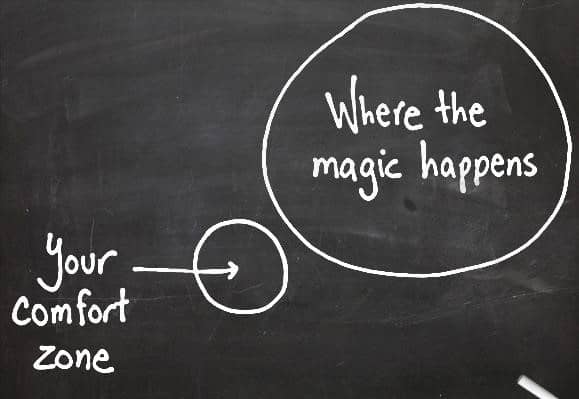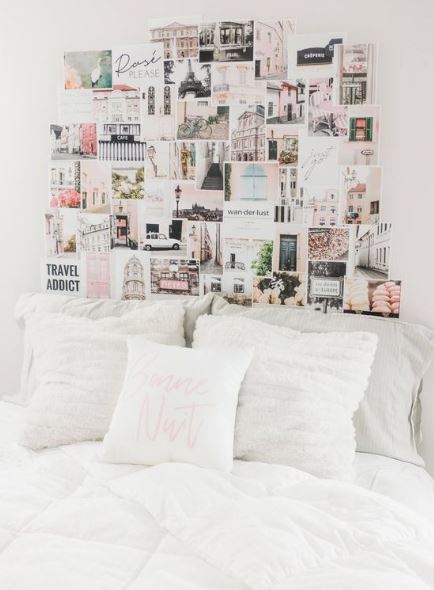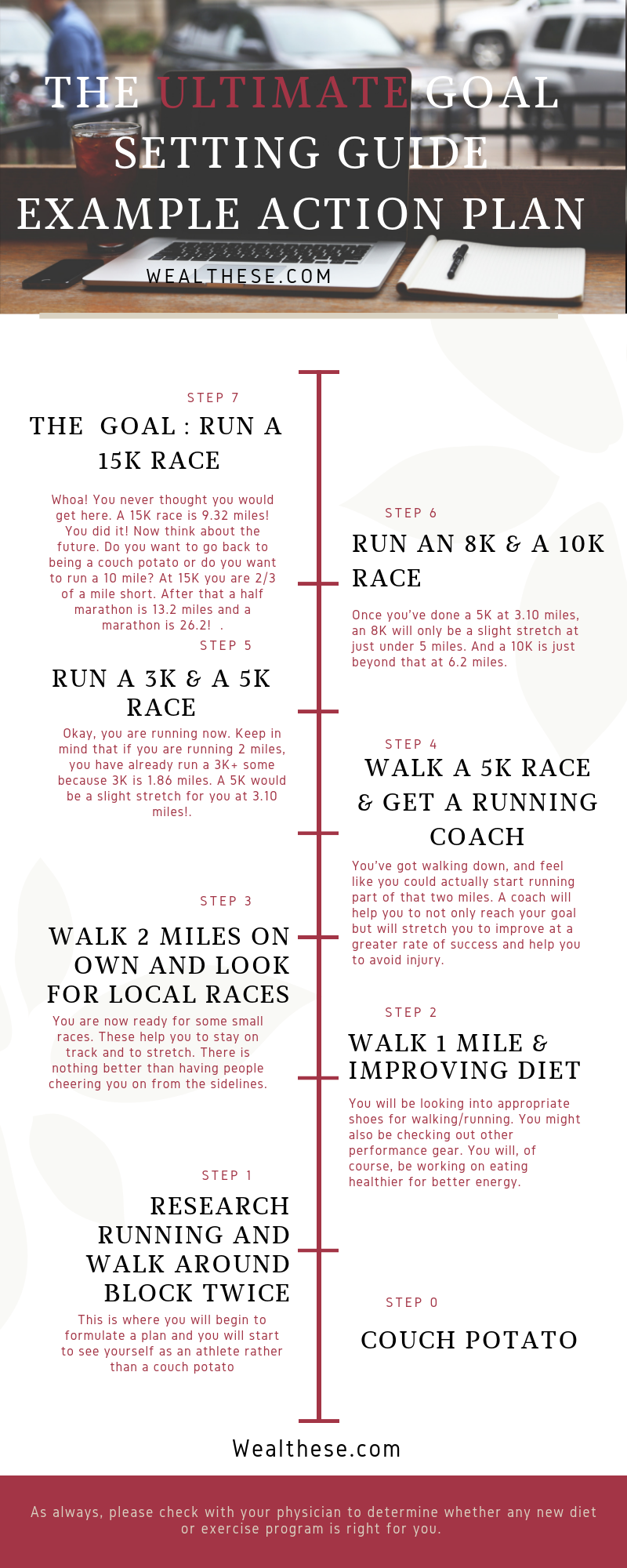Do you dream of having more but don’t really know what it is you want? Or, do you know what you would like to accomplish but are a bit scattered on how to get it? It is a good chance you need help with setting goals.
This guide can help you sort out what it is that you want and how to change your life to get it.
Why is setting goals important?
Let’s face it. We all know people who are perfectly content with having the bare minimum in life. They don’t aspire to anything more than merely existing. And that is OK.
But, if you are reading this, then it is a good chance that you aren’t one of those people. And, you want more and are not leading the life that you have envisioned.
Fortunately, setting goals can help you achieve your dreams faster.
Also, goal setting is a learned skill. Just like when you exercise your muscles, when you exercise your goal setting and achievement muscles, you will see gains.
How does setting goals lead to success?
Setting a goal and breaking it down to the smallest steps can create a road map to follow. When you set goals, even small ones, and you achieve them, your life improves.
And, when your life is moving forward and you gain success from setting and achieving small goals, your bigger goals will be accomplished. And consequently, you will set more and achieve more by continuing to set bigger goals.
What Is An Example of Setting Goals?
There are long term goals and short term goals.
Long term goals are just as they sound…long term. Some people set out goals one year, two years, five years and ten years.
Experts have determined that the farther out you set your goals, the less urgent they become. Therefore, you can write out long term goals but will be focused on the small daily goals that you can achieve immediately.
What are long term goals examples?
-
Finishing high school
-
Earning university degree
-
Earning an advanced degree
-
Get dream job
-
Become the boss
-
Start a business
-
Run a profitable business
-
Sell business for a large sum
-
Train for a marathon
-
Complete a marathon
-
Enter a fitness competition
-
Buy a house
-
Pay off mortgage
-
Pay off mortgage early
-
Get out of debt
-
Write a book
-
Get married
-
Start a family
-
Save money for your children’s college
-
Raise healthy, happy children
-
Be in good health when entering retirement
-
Retire early
-
Have a certain amount of money for retirement
-
Live in another country
-
Travel the world
-
Speak a new language
-
Learn a musical instrument
-
Perform in a concert
What is the first step in setting goals?
First, determine what goals you want to achieve. For this, feel free to write out everything you want to be.
Then, pick the top three, because there is usually a pretty lengthy list, and ask yourself, which one is the one that you need to achieve first?
After that, ask yourself:
What is the one goal that might make the others easier to achieve?
For example, you could put the top three goals like this:
- Get a new job
- Lose 20 lbs
- Run a 10k
How I would re-order these would be:
- Lose 20 lbs
- Get a new job
- Run a 10k
How To Stack Your Goals
The difference between the two is that by achieving goal number one, losing 20 lbs, will make you lighter in person, literally. Consequently, you will be lighter energy-wise.
Therefore, you look better, feel better and in turn will feel more confident. With this, you would be more confident in looking for a job and feel better when you are interviewing.
Also, in the effort to lose 20 lbs, you will be exercising and getting more fit before you begin training for a 10k. With less weight, you would risk a lot less injuries while training for the 10k.
“If you look good, you feel good. If you feel good, you play good. If you play good, they pay good.” – Deion Sanders
Then, with your job search, with a higher self worth, you will choose a job a higher salary and better benefits. Therefore, with more money, you will be able to buy better athletic equipment, afford better self care, higher quality food and perhaps hire a running coach.
Therefore, ordering your goals where each goal makes another one easier is key.
Boiling it down, your first and only goal, for now, would be to lose 20 lbs. Put your focus on that goal.
The ONE Thing
In the book, The One Thing by Gary Keller and Jay Papasan, it is recommended to do this: Break the big goal down to one thing you can do today.
This means that you must prioritize the most important thing that you need to do for that goal.
And then, go beyond that by doing the one most important thing every day to achieving that goal.
Then finally, you do that one thing first before anything else gets done for the day.
Want to remember this? Post this The Ultimate Setting Goals “How To” Guide! post to your favorite Pinterest board!

The question is:
“What is the ONE THING you can do, that by doing it, everything else would be easier or unnecessary?” This can be broken down into any plan’s time limit. Starting with a 10 year goal or a daily goal.
But before you start breaking your goals down into units of time, it will be good to further define your goal.
What Is A Good Goal?
A good goal is anything that will propel your life forward and make it better. And a bad goal is anything that includes, revenge or harming others.
It may sound silly to bring this up but there are those who might not understand this. Always be working toward a better YOU.
Now, how to break down a goal.
For this, I use the SMART method
S-Specific, M-Measurable, A-Attainable, R-Relevant, T-Time

-
Specific – What is your goal? To lose weight? How much weight? To get a promotion? What will your new title be?
- Measurable – If you want to lose 20 lbs. this year, how will you track it? How will you know if you are on track for that promotion?
-
Attainable – Is your goal achievable? Can you lose 20 lbs overnight? Of course you can, but you will have to chop off one of your legs. So is that really attainable? Be reasonable.
Are you working in the mail room and the position you want is CEO?
There is an old movie called Secret of My Success and it happened just this way. But it was a movie and would be possible only under an extremely and super rare set of circumstances.
If you get a chance to watch the movie, it’s very inspirational but not very probable.

Stretching yourself is fine but being delusional is not. And, your brain will process that this is too difficult. Unfortunately, you will be setting yourself up for failure.
Are you unable to buy groceries every month but still want to travel the world? If you set things up right, you will achieve your goal but you will have to be diligent and patient.
-
Realistic/relevant – As I mention in my post, How To Get Back On Track With Your Goals, I am guessing that the creator of this method wanted to have a cool acronym so the R in SMART is for realistic and/or relevant.
Realistic to me is the same thing as attainable. Whenever I have used the SMART method, my answers for the attainable category are exactly the same as this one.
Is your goal just enough to stretch you but not be so immense that you will more than likely fail?

And as for “relevant” why would it be your goal if it wasn’t relevant to you? The “R” for me is redundancy so that it could be a cool acronym. Don’t feel bad if your answers match “A” for Attainable.
-
Time – You need to put a time frame on your goal. The more specific the better. I will lose 20 lbs. by December 31st at 8:00 AM.

Create A Visual Representation Of Your Goals With A Vision Board
If you are like me when I started, I would write them out, type them on a Word document and be too embarrassed to actually print them out.
Especially when I had roommates and I didn’t want anyone to see them sitting out so I left them on my computer, which basically put them out of sight/out of mind and difficult to achieve.
There are a few ways to get around this:

1) Be Bold
It sucks but what sucks worse? Not getting what you want or people in your home knowing your business? Hey, it could make you more accountable.
So, if you are bold, type them out, make copies, post them everywhere you need to be able to see them every day.
If you are a person who doesn’t care what people think, you can start a blog detailing your journey. Write posts about your progress and set backs. It is a great way to remember how far you have come.
2) Hide Your Goals
However, if you cannot bring yourself to post your goals for all to see, you still need to have them accessible. Maybe even somewhere where you can access them daily.
For this, you would merely write them in your planner, bullet journal or in your car. Read them on the way to work or in the parking lot before you go into work.
Ask yourself (the day you are planning out your week), “What can I do today, this week, this month or this year to get me closer to my goals?”
Want to remember this? Pin this Ultimate Goal Setting Guide to your favorite Pinterest board!

3) Create a vision or dream board
A vision or dream board is a collage you create of pictures to remind you for that which you are working.
If you are crafty, or even if you are marginally so, this is a pretty fun project.
First, you will need poster board or the foam poster board from your craft store. Then you will scour magazines and the internet for pictures that represent your goal.
Then, you will paste the pictures onto the board in any way you want (most people do a collage) and you will hang the board where you can see it.
Therefore, when your goals are staring you in the face every day it’s easier to visualize yourself achieving them. If you still feel that this too goes against your privacy you can…

4) Create a vision book
For this, get an empty photo album or journal and do the same thing as the vision board.
This method is somewhat like the goals journal above but instead of just having them written out, you will do something like a junk journal.
Unfortunately, you will have to make a conscious effort to look at it often because it can be another out of sight/out of mind situation.
If you don’t think you will be able to keep up with this then you can…
5) Create a vision wall with photographs and hide your goals in art
I first saw this on Pinterest and don’t know to whom to give credit to but it was an amazing idea. This woman took each one of her goals and found/created a photo sized (8×10) picture of each one in black and white.
Then, she pinned them to an empty wall to look like art. Also, you could even put them in frames and put them on the wall if you wanted.
In that case, they would look more like edgy decoration than goals. No need for nosy people to be up in your business.

I cannot find the original photo of her wall but I found these that looked somewhat similar. The wall the woman did was more squarely done and the photos were spaced evenly but you get the idea. And here are even more ideas.

6) Pinterest board
Now, I have seen these motivational boards and if this method works for you, then that is great. But I would caution you to be careful that you are not pulling in contradictory statements.
For some, I have seen people pin pins about how sensitive they are to treat them delicately because of their mental health. And then they will pin something about how some people can’t handle strong people and they must be destroyed.
Unfortunately, that screams more about narcissism and crushing people than about how they are working to achieve their goals.
Or, there are pins about how they are crushing it at the gym but will pin something funny about being lazy, eating tacos and watching Netflix in sweatpants everyday instead of working out.
You are sending yourself mixed signals. I feel that this will put you on an “energetic wobble” that may do more harm than good.

7) Vision box
Instead of having things out where you can see them every day, you can put everything like thoughts, pictures, affirmations, etc. in a special box. The box serves two purposes:
1) Privacy
2) If you are a person who is having a hard time detaching from your goals, seeing them all of the time will keep you in a place of “lack.”
This may be the best option so that you can detach and let them go.
8) Create a chart
If you want, you can go a step further and take each goal and break them down to actionable steps.
To do this, you need to start at the end goal and go backwards.
-
You want a promotion?
-
What would get you that promotion?
-
Landing that big client or completing that big project that no one can seem to get to?
-
What steps would you take to land that client or complete that project?
-
Do you have the skills necessary?
-
How do you get the skills that are needed? A class or training program?
Go all the way down to something that you can do today to begin on that goal. I like to create a chart.

An action, such as “getting in shape,” will need more than one step that will branch off from it. And may have other steps that have multiple steps branching off of it.
Also, see how the “getting in shape” goal had a better definition of “running a 15k by August 31st?” You have to set what YOU see as being in shape as the final goal or there will be too much obscurity in measuring it.
Breaking Down Big Goals To Micro Goals
And, can you see how it was broken down into something you can do today? In each step on the ladder, you set mini goals by weeks or months.
Obviously, this was an example, however, you may think that a marathon or an Iron Man competition is how you will measure whether you are fit or not.
If you are highly overweight, you may want to add weight loss and nutrition as goals before you start running so that you don’t wreck your joints.
Remember, this chart is customizable and it is very likely that you will be modifying as you go.

9) Use a voice recording
You can use your smart phone or other recording devices to record yourself saying your goals.
However, be sure to break them down into small increments as well. Then as you accomplish each mini-goal, re-record yourself to keep it updated.
This works well for:
- The visually impaired
- Those who are prone to auditory learning
Do Not Fear Change
Don’t be afraid to change the end goal.
Maybe you found that you reached your goal by June and now can shoot for something higher.
Also, you might have found that August 31st was too close and you need to push it out, no problem.

All goals are changeable
But, remember, goal setting is supposed to make you push yourself to do what you need to achieve them.
And, it is supposed to be a bit uncomfortable. However, it is NOT supposed to kill you though. Also remember, death is counter-productive to your goals.
If you feel that you need to change your goal, which happens from time to time, check out my posts
- When To Change Course Or Abandon A Goal
- Have You Gotten Derailed? How To Get Back On Track With Your Goals
- Should You Save Money Or Make More Money To Reach Your Financial Goals Faster?
Start Setting Goals Today
First, by using the example of “getting in shape,” spend today defining what getting in shape means to you. Then, get up off of the couch and walk in place for two minutes.
And, if two minutes is easy, go until you are huffing and puffing. Then, record it somewhere to keep track for measurability.
Then, congratulate yourself for taking action. Also, vow to go 10-30 seconds more tomorrow.
Set Mini-Goals
When you are doing the timeline, be sure to have one or two mini goals that you will achieve each day and reward yourself (not with bad food).
A reward may be one hour of television (or one hour of television while you are the treadmill), a new book or eating breakfast after your workout.
When you reach the milestones in your timeline, be sure to celebrate your achievements with bigger rewards.
Rewards for Achieving Your Goals
Rewards can be as big or as small as you want or can afford.
I’ve seen people who reward themselves with a cosmetic procedure after losing weight. And, I’ve seen people throw a dinner party when they paid off their mortgage in 5 years.
Reward Yourself Beyond the Pleasure Of Reaching Your Goal
The point is that you celebrate and reinforce the pleasure of achieving your goal deep into your brain.
What does your mind and body seek almost at all times? Pleasure. Soon you will crave the pleasure that accomplishment brings and that is the key to future good habits and achievement.
What goals have you set for yourself? How do you keep yourself accountable? Do you have a vision board or wall? Share your experiences with me in the comment section below.
Related Posts:
https://wealthese.com/2018/07/11/get-back-on-track/
Want to remember this? Post this The Ultimate Setting Goals “How To” Guide! post to your favorite Pinterest board!


